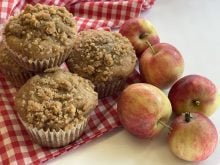It was the morning after Halloween when my youngest son, Skyler, woke up and wondered if it was Halloween again. He was up for collecting more candy and partying. I told him that it was just a normal day today, nothing special except school. He slowly rolled out of bed.
His face looked tense and I could sense those wheels turning in his head. When I asked what was bothering him, he wondered how long it was before Christmas. “Why?” I asked. He replied, “I don’t want to run out of treats before Santa
Read Also

Vintage power on display at Saskatchewan tractor pull
At the Ag in Motion farm show held earlier this year near Langham, Sask., a vintage tractor pull event drew pretty significant crowds of show goers, who were mostly farmers.
brings more.”
I assured him that he would not run out of junk food, since we collected bags and bags of candy. I also explained to him that he could not possibly eat the treats all at once, or his body would be really sick. I suggested mixing the candy with good food and then it would last. “Like what?” he challenged me.
Here are the food ideas that we came up with. He liked the meal and the cookies. He is also still indulging in a bit of candy each day.
Slow cooker chicken
Serve with rice or mashed potatoes. The aroma from this recipe welcomed us home after spending time at the rink playing hockey. It’s real comfort food.
12 boneless, skinless
chicken breast halves
11/4 cups whole 310 mL
cranberry sauce
1/2 of an envelope dry onion
soup mix
1/2 cup French dressing 125 mL
1 tablespoon 15 mL
granulated sugar
1/8 teaspoon pepper 0.5 mL
Arrange chicken in a five quart (five L) slow cooker.
Mix remaining five ingredients in small bowl. Spoon over chicken. Cover. Cook on low for eight to 10 hours or on high for four to five hours. Serves 12.
You can also bake this covered, in an ungreased four quart (four L) casserole 325 F (160 C) oven for 11/2 to two hours.
From: Company’s Coming Millennium
Edition by Jean Pare.
Orange poppy seed salad
To complete the main course.
1 head of romaine lettuce, chopped
1 (10 oz.) can 284 mL
mandarin orange
segments, drained
1/4 cup slivered almonds 60 mL
1/4 cup sunflower seeds 60 mL
2 green onions, sliced
1/4 cup vegetable oil 60 mL
1/4 cup vinegar 60 mL
1/4 cup sugar 60 mL
11/2 tablespoons poppy 22 mL
seeds
Toss the lettuce and next four ingredients in a large salad bowl.
Sweet vinaigrette: Combine cooking oil, vinegar, sugar and poppy seeds in a jar with a tight-fitting lid. Shake well. Makes about 1/2 cup(125 mL) vinaigrette. Just before serving, drizzle dressing over salad. Toss. Makes about 10 cups (2.5 L). Serves four.
Note: To toast nuts and seeds, spread evenly in ungreased shallow pan. Bake in 350 F (180 C) oven for five to 10 minutes, stirring or shaking often, until desired doneness.
Breakfast cookies
Somewhat nutritious and great for those rushed mornings.
1/2 cup soft margarine 125 mL
or butter
1/2 cup peanut butter 125 mL
1 cup liquid honey 250 mL
2 eggs
1 teaspoon vanilla 5 mL
11/2 cups flour 375 mL
3 cups quick-cooking 750 mL
rolled oats
1 cup medium coconut 250 mL
3/4 cup bran 175 mL
1 cup crisp rice cereal 250 mL
1 teaspoon baking soda 5 mL
1 teaspoon salt 5 mL
1 cup chocolate chips 250 mL
1/2 cup chopped pecans 125 mL
Beat margarine or butter and peanut butter in a large bowl. Add honey, eggs and vanilla. Beat until blended. Add remaining nine ingredients. Mix. Shape into balls approximately one tablespoon (15 mL) each. Put on an ungreased cookie sheet. Flatten slightly. Bake at 375 F (190 C) for about 12 minutes.
Note: You can substitute one cup (250 mL) dried cranberries for the chocolate chips.
Dealing with infection
Dear TEAM: Last summer my husband needed a harsh treatment of antibiotics to clear up an infection. This caused him to get a complication, a bowel infection. Three dreadful weeks went by until it became better. In order to prevent more problems he takes acidophilus bifidus capsules. He drinks buttermilk and eats yogurt as well. What is the difference between these products, and how much would one have to get through the diet to equal that of the capsules? – M.L., via internet.
Dear M.L.: Thank you for writing. When my son was small, he was put on antibiotics for an ear infection. Weeks went by and his ear infection cleared up, but he developed an upset stomach.
After talking to a few different physicians, we decided to follow the recommendation of a young South African doctor, and give him probiotic supplementation along with feeding him yogurt. After just three days he was feeling better.
When we asked our doctor how to avoid problems with antibiotics in the future, we were given two rules:
- Take all of the medication. This is necessary to properly kill the bacteria that is causing the illness, or else it may come back stronger.
- Because antibiotics can kill both bad and good bacteria, take a probiotic supplement to avoid problems.
We continued for approximately two weeks after the medication was done. Since then we eat yogurt most mornings for breakfast.
I further researched your question and according to Michael Roizen, and Mehmet Oz, two doctors who wrote a medical book You – The Owner’s Manual, the best way to avoid problems while taking antibiotics is to consume 20 milligrams of probiotics, like lactobacillus acidophilus, twice daily, either by way of supplement or by eating yogurt.
Buttermilk was not mentioned as a food source.
To get the dosage information on food or supplements, you must read the labels. I checked the yogurt that I had in the house, and it did not give information other than “contains active bacterial culture.” If you are fond of a certain brand of yogurt, you could contact the company to get the milligram information.
What are probiotics made of? The main probiotic genera in both yogurt and supplements are Lactobacillus and Bifidobacterium. Yes, they already live in your intestines. Their job is to break down foods and drugs and prevent disease. They should be present, especially when you are fighting infections.
There are dozens of species within these genera such as Lactobacillus acidophilus, Lactobacillus rhamnosus and Bifidobacterium bifidum.
Research suggests that some of the health benefits of probiotics are assistance with gastrointestinal relief, allergies, respiratory infections and urological infections.
Jodie Mirosovsky is a home economist from Rosetown, Sask., and one of four columnists comprising Team Resources. Send correspondence in care of this newspaper, Box 2500, Saskatoon, Sask., S7K 2C4 or contact them at team@producer.com.
















